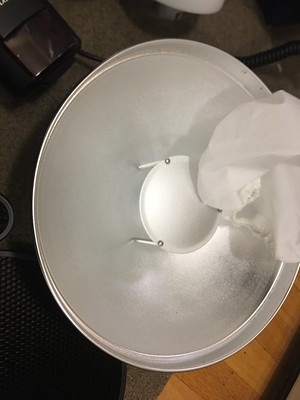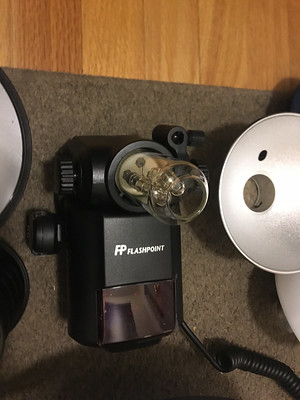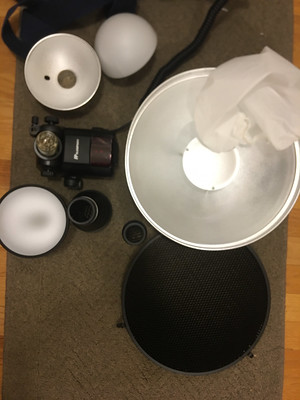Robert Lai
Well-known
My two favorite cameras have the same feature set:
1) autoexposure with full manual capability
2) TTL flash control
They are the Nikon F3, and the Leica M7.
Both require a bit of study in making the flash system work. But, they do work. I relied on my F3 TTL flash control all the time when doing macro photography in the operating room. Similarly, the M7's TTL flash system works just fine also.
Part of the problem for the M7 and M6TTL is that the documentation of the flash features is poor. There are some parts in the M7 manual, and the rest of the information such as how to get second curtain synch, and HSS, are actually in the Metz SCA 3502 instruction booklet (available online).
Also, I think it was just poor market timing for the M7. When I bought mine in 2015, everybody was going nuts over the M8 and M9, and "digital is the future". The film die-hards on the other hand felt that a proper film M camera should have springs and gears timing the shutter. Thus, the M7 was a pariah of its time, like the M5. (BTW I have two M5 cameras. I love rejects and misfits, misunderstood cameras). So, I bought my mint, almost NOS M7 at the princely sum of $1200 from a fellow enthusiast who was going all digital with the M9. He wanted to sell me his mint Summilux 75 mm f/1.4 (non-ASPH). That lens was offered for around $2K, but I turned it down. This is proof that I don't always make good decisions!
Even with multiflash TTL control available, I rarely made use of the feature. My subjects are my children, and they were too small to want to say around in one area long enough for me to deploy these flashes. I think a lot of non-professional folks would balk at carrying more than one flash unit on an outing.
1) autoexposure with full manual capability
2) TTL flash control
They are the Nikon F3, and the Leica M7.
Both require a bit of study in making the flash system work. But, they do work. I relied on my F3 TTL flash control all the time when doing macro photography in the operating room. Similarly, the M7's TTL flash system works just fine also.
Part of the problem for the M7 and M6TTL is that the documentation of the flash features is poor. There are some parts in the M7 manual, and the rest of the information such as how to get second curtain synch, and HSS, are actually in the Metz SCA 3502 instruction booklet (available online).
Also, I think it was just poor market timing for the M7. When I bought mine in 2015, everybody was going nuts over the M8 and M9, and "digital is the future". The film die-hards on the other hand felt that a proper film M camera should have springs and gears timing the shutter. Thus, the M7 was a pariah of its time, like the M5. (BTW I have two M5 cameras. I love rejects and misfits, misunderstood cameras). So, I bought my mint, almost NOS M7 at the princely sum of $1200 from a fellow enthusiast who was going all digital with the M9. He wanted to sell me his mint Summilux 75 mm f/1.4 (non-ASPH). That lens was offered for around $2K, but I turned it down. This is proof that I don't always make good decisions!
Even with multiflash TTL control available, I rarely made use of the feature. My subjects are my children, and they were too small to want to say around in one area long enough for me to deploy these flashes. I think a lot of non-professional folks would balk at carrying more than one flash unit on an outing.
Robert Lai
Well-known
I should add that the "film camera shutters use springs and gears" mentality was present when I bought my first F3 in 1983. Pros were still using the F2, being suspicious of the electronics in the F3.
It was very much a deja vu feeling when I bought the M7.
It was very much a deja vu feeling when I bought the M7.
madNbad
Well-known
As an addendum, I always found it ironic that in order to use the flash off camera, you need a sync cord made by Nikon.
oftheherd
Mentor
Folks, after all this discussion
I am still mystified at the apparent lack of popularity for Leica M film TTL flash.
Did it not work that well?
Auto Thyrister flash works just as well?
Or did Leica's "simpler is better mechandising" convince Leica newbies advanced technology is bad?
My only experience with TTL flash is the Contax dedicated flashes. Most of the thyrister flashes I have had were good, but not as good as the Contax TTL. If I had to guess I would say first of all, I don't think most people realize how good flash can be to enhance a photo. 2nd, that technology tends to be more expensive. If a person seldom uses flash, they might not consider TTL to have sufficient advantages for the price. Or they may just never have learned when flash might be good, or which might be best.
I don't know, just a guess.
I am one who used to like using flash more often; and there were times when bulb seemed to me to give better light. So it was interesting to see the comments on bulb flash.
Beemermark
Mentor
How many know that the Olympus OM-2 was the first camera to offer TTL flash? Heaven sent for macro work but otherwise not a major advantage over flashes that read the reflected output to control output. Modern SLR like Nikon Matrix metering are a big step up for TTL, but I don't see any advantage for TTL with a rangefinder.
charjohncarter
Mentor
I am one who used to like using flash more often; and there were times when bulb seemed to me to give better light. So it was interesting to see the comments on bulb flash.
I would still like to have the easy use of the AG-1 bulbs: portable, easy to use, and you almost couldn't miss with them if you stayed within 5-8 feet and used any box camera including the Instamatic.
oftheherd
Mentor
How many know that the Olympus OM-2 was the first camera to offer TTL flash? Heaven sent for macro work but otherwise not a major advantage over flashes that read the reflected output to control output. Modern SLR like Nikon Matrix metering are a big step up for TTL, but I don't see any advantage for TTL with a rangefinder.
I didn't remember Olympus-2 was the first to have TTL but I am not surprised as the Olympus line had many innovations over time.
As to flash, I didn't do all that much macro, close up, but not macro. I usually used a Sunpak 311(I think that was the nomenclature) which had adjustable power settings and scales to get me where I wanted to be. It worked well.
Andy Kibber
Well-known
I enjoyed using M6TTL with SF20 flash. Exposure was always excellent. The lack of bounce was irritating though. How hard would it be to put a hinge on the flash unit?!
You could used a Nikon synch cord to get the flash off camera, but juggling focus, shutter release and flash required a third hand.
You could used a Nikon synch cord to get the flash off camera, but juggling focus, shutter release and flash required a third hand.
oftheherd
Mentor
I would still like to have the easy use of the AG-1 bulbs: portable, easy to use, and you almost couldn't miss with them if you stayed within 5-8 feet and used any box camera including the Instamatic.
It is my belief from my observations of my use of AG-1 as well as those bulbs that were larger, that bulbs put out a light that is totally different than electronic flash. And it was a difference that I thought could give a look in some photos that I really liked. I especially liked bulbs when painting with light.
But of course everyone is entitled to their own opinion and preferences.
charjohncarter
Mentor
I agree, it is fuller and seems to go deeper into the room. Also, that fuller word means the light wraps around the subject, producing a more natural looking light without such harsh shadows:
 Kodachrome 1960s-1970s by John Carter, on Flickr
Kodachrome 1960s-1970s by John Carter, on Flickr
 Kodachrome 1960s-1970s by John Carter, on Flickr
Kodachrome 1960s-1970s by John Carter, on Flickrshawn
Mentor
They lasted longer so any movement on either side dulled the edges of shadows. Also less focused compared to most electronic flashes so more reflections from the room. Depending upon the flash it may have had a larger reflector too which made it more of a diffuse light source.
Take an empty rubbing alcohol bottle and cut the top off it. Slip it over an electronic flash (that can pivot up) and give it a try. Makes it quite a bit softer.
To get really fancy check out the inexpensive barebulb flashes available. They had loads of accessories that can be added to change the light around.
Shawn
Take an empty rubbing alcohol bottle and cut the top off it. Slip it over an electronic flash (that can pivot up) and give it a try. Makes it quite a bit softer.
To get really fancy check out the inexpensive barebulb flashes available. They had loads of accessories that can be added to change the light around.
Shawn
charjohncarter
Mentor
They lasted longer so any movement on either side dulled the edges of shadows. Also less focused compared to most electronic flashes so more reflections from the room. Depending upon the flash it may have had a larger reflector too which made it more of a diffuse light source.
Take an empty rubbing alcohol bottle and cut the top off it. Slip it over an electronic flash (that can pivot up) and give it a try. Makes it quite a bit softer.
To get really fancy check out the inexpensive barebulb flashes available. They had loads of accessories that can be added to change the light around.
Shawn
Right, the reflector that I had for above was a fan reflector that folded to fit in a shirt pocket, opened it was about five inches (but a little off topic I used a Leica IIIf). Once I tried to make a electronic flash placed in an old reflector it worked a little. I think I needed to have some reflection back to the reflector as well a straight out.
I did buy a couple of Vivitar Macro Flash 5000 ring flashes; this helps a little but has many other problems. You have to know when NOT to use it.
But I guess I'm getting off topic, so sorry OP.
shawn
Mentor
Right, the reflector that I had for above was a fan reflector that folded to fit in a shirt pocket, opened it was about five inches (but a little on topic I used a Leica IIIf). Once I tried to make a electronic flash placed in an old reflector it worked a little. I think I needed to have some reflection back to the reflector as well a straight out.
I did buy a couple of Vivitar Macro Flash 5000 ring flashes; this helps a little but has many other problems. You have to know when NOT to use it.
Yeah, for most camera based electronic flashes they would be very directional (for battery life) so a reflector wouldn't do much unless you aimed the flash at the reflector itself. Or maybe tried to build something like a beauty ring for it.

That is around 14" and even then it is made for a bare bulb flash.

Once you get to that type of flash there are lots of modifiers available for them.

And of course umbrellas and such too.
I have a camera flash bracket that I can use that flash on but most of the time it is on a stand and firing wirelessly. That is probably where TTL would be the most handy for film since a thyristor based flash wouldn't be accurate off camera.
With digital I just do it manually with the immediate feedback.
Shawn
johannielscom
Snorting silver salts
But, the Konica Hexar RF does have TTL too!?��
shawn
Mentor
But, the Konica Hexar RF does have TTL too!?��
Don't think so, it just had a dedicate Auto flash built for it.
Shawn
das
Well-known
Yep, no TTL on a Hexar RF. Using a small on-camera flash on a rangefinder like the SF20, whether it be TTL or auto, gives the same results pretty much every time. TTL comes in handy when doing more complex flash stuff.
Don't think so, it just had a dedicate Auto flash built for it.
Shawn
charjohncarter
Mentor
Yeah, for most camera based electronic flashes they would be very directional (for battery life) so a reflector wouldn't do much unless you aimed the flash at the reflector itself. Or maybe tried to build something like a beauty ring for it.

That is around 14" and even then it is made for a bare bulb flash.

Once you get to that type of flash there are lots of modifiers available for them.

And of course umbrellas and such too.
I have a camera flash bracket that I can use that flash on but most of the time it is on a stand and firing wirelessly. That is probably where TTL would be the most handy for film since a thyristor based flash wouldn't be accurate off camera.
With digital I just do it manually with the immediate feedback.
Shawn
Correct in my view (and I have all that stuff), but I can't see many RF cameras being able to have this attached to them.
I will never have the use of a flash bulb (AG-1) again, but it was sure nice while it lasted.
oftheherd
Mentor
Correct in my view (and I have all that stuff), but I can't see many RF cameras being able to have this attached to them.
I will never have the use of a flash bulb (AG-1) again, but it was sure nice while it lasted.
Many types of flash bulbs are available on ebay, but they are usually rather expensive. I just took a quick look and it seems COVID19 has reduced prices somewhat, but it still may not be enough for most of us to want to buy them. Fortunately for me, when and if I can get back into photography and especially flash, I have a small stash, including blue and IR.
Ah, for the good old days.
charjohncarter
Mentor
I know, I checked too I still have a few AG-1 bulbs but I can't find my reflector unit. I can't even remember when you used a blue bulb vs a clear: tempus fugit.
Beemermark
Mentor
I didn't remember Olympus-2 was the first to have TTL but I am not surprised as the Olympus line had many innovations over time.
As to flash, I didn't do all that much macro, close up, but not macro. I usually used a Sunpak 311(I think that was the nomenclature) which had adjustable power settings and scales to get me where I wanted to be. It worked well.
Around 1980 I was working in a small branch of a large company. I was/am a Mechanical Engineer but was deeply involved in photography even at that time. The chemistry department wanted photographs of resin over a period of time (to look for degradation) as we were spending 10 of thousands dollars each month on resin. Trying to use Use my Nikon F2 to photograph resin through a microscope wasn't yielding to much in the way of decent results. I saw an ad for the OM-2 (N?) proclaiming the benefits of TTL flash through a microscope (remember Olympus was big in lab and microscopes) so the company bought me a complete outfit with which I obtained excellent results.
Share:
-
This site uses cookies to help personalise content, tailor your experience and to keep you logged in if you register.
By continuing to use this site, you are consenting to our use of cookies.

